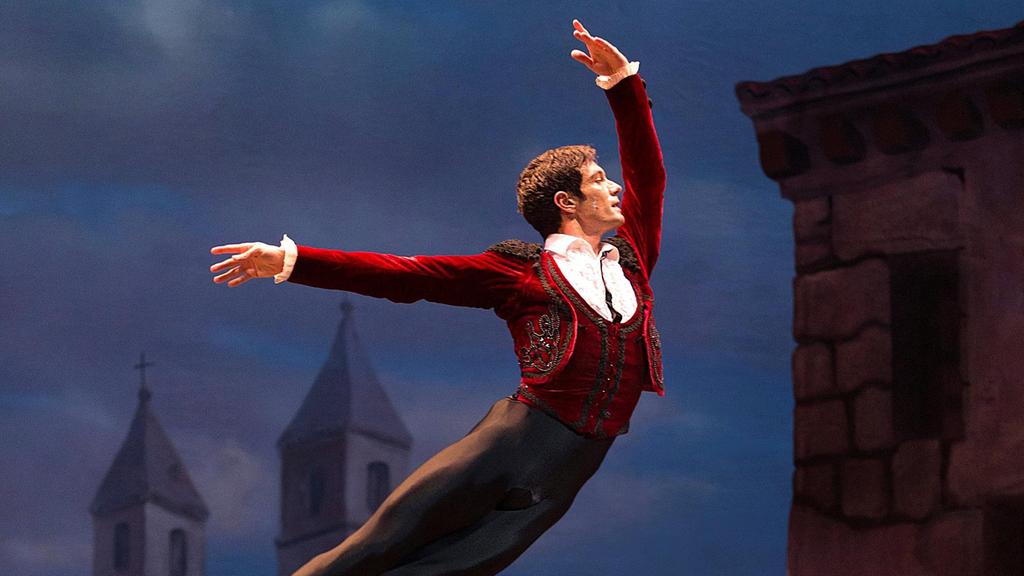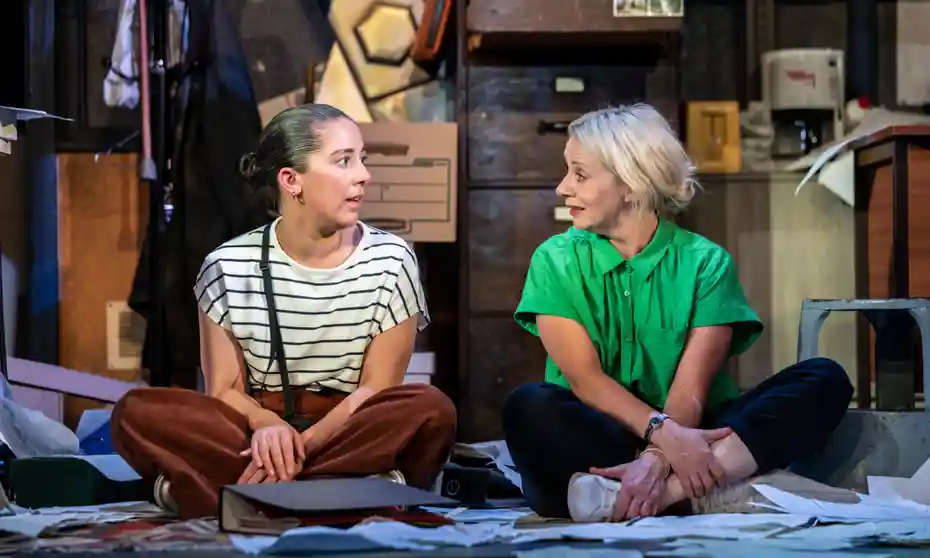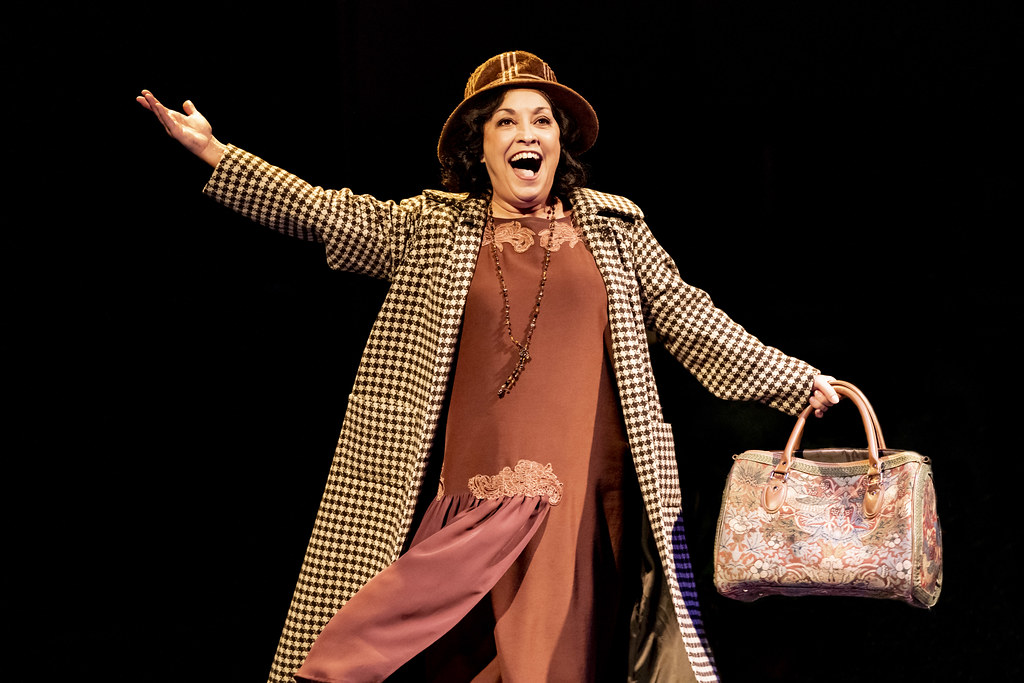When José Carlos Martínez was growing up in Cartagena, he loved the unique movements and rhythms that are woven into the fabric of Spanish dance and folklore; the flamenco, the fandango, the bolero. His first role was John Travolta’s toe-tappingly brilliant Danny in a production of Grease – naturally, given he was the only boy in his dance class. So, when he grew out of the dance school and enrolled at prima ballerina Rosella Hightower’s Ecole Supérieure de Danse in Cannes, before joining the Paris Opera Ballet in 1988, it was a culture shock.
“We did all the classical ballets there,” he says. “Swan Lake, Giselle and so on. People wanted to see the outstanding technical side of ballet, the pas de deux. I learned a lot.”
Not that Martínez didn’t throw himself wholeheartedly into one of the world’s Big Four ballet companies.
He became principal dancer in 1997, and throughout his 28 years in Paris, won sufficient awards and acclaim to be recognised as one of the best dancers of his generation. But what happened next was fascinating. Hanging up his ballet shoes to become a choreographer and then artistic director of the Compañía Nacional de Danza in his native Spain, he began to consider how he might combine the classical ballet that people flock to see with the folklore of Spanish dance that he loved as a child. And it all came together in his version of Don Quixote, which comes to the Abu Dhabi Festival on Wednesday and Thursday.
“When I came to the Compañía Nacional in 2010, the idea was to bring back some of the classical, traditional ballets as the former director Nacho Duato had been working in a very contemporary way,” he says. “We hadn’t performed a full-length, classical ballet for 25 years. So I was trying to find the right title for us, and it just seemed that Don Quixote made sense – it is a classical ballet but, of course, it is a Spanish story.”
A complex but inspirational 17th-century story at that. Putting aside the literary merits of Cervantes’ tale of a Spanish nobleman and his sidekick Sancho Panza on a vast tragicomic quest, the ballet production itself has a long and famous history.
Created by Marius Petipa for Moscow’s Bolshoi Ballet in 1869 and refined and revived by Alexander Gorsky in 1900, it was created to show off how expressive ballet could be, the last grand pas de deux from the final scene of one of the art form’s greatest passages.
Some of the 20th century’s most famous dancers and choreographers, such as Rudolf Nureyev and Mikhail Baryshnikov, have taken on Don Quixote, and Martínez says he had all of these versions in mind when he began thinking how he would approach the adapted stories the ballet tells in three acts.

“I wanted to respect the action and the history of the ballet, but I also wanted to change – just a little bit – the idea that Don Quixote and Sancho Panza are like a comic turn, a pantomime. It was important for me that Don Quixote has a poetic, romantic side and can find real love, which is not in the original version.
“Also, we call it Don Quixote, but really it’s the story of Quiteria and Basilio. Her father wants to marry her off to city’s richest man but she is in love with Basilio – Don Quixote is only there to disturb that story and take it off into a dreamlike, almost supernatural place. He’s fighting with his imagination. So, to give Don Quixote a poetic side was important.”
It’s not just the storytelling which might raise a few eyebrows, either. Martínez says it was really important to emphasise the Spanish elements of the first act, even if Petipa did originally make some reference to them. So there are echoes of bolero, fandango and flamenco in the opening exchanges, in an attempt, Martínez says, to get “closer to our folklore”.
“It felt really nice to get back to the essence of Spanish dance, and I had some help to get the right arm positions, rhythms and dynamics,” he tells us. “Even with the costume design, we wanted it to evoke, say, the paintings of Velázquez.”
It’s interesting listening to Martínez explain the level of detail that has to go into a production like this when he’s in charge of a national dance company. His move from principal dancer to director is akin to a world famous footballer such as Zinedine Zidane becoming head coach of Real Madrid – there is suddenly a whole set of new demands which require a completely different skillset. It’s no longer simply about performing your moves to the best of your ability. Martínez likes the comparison.
“Oh yes, it’s really a different job altogether,” he says. “When you are a dancer you only worry about your body and your performance. But when I began to choreograph it was a big change. You need to work with people, organise them and it was the beginning of my evolution that finished by becoming director of this company.
“But it was so difficult being a director at the beginning. The first season, I wasn’t ready for all the administrative side, for sure. With the help of my team I was able to be in the studio more and more. For me it was the right transition and right moment to stop dancing and begin to work with the others.
“Finally now when I see the company on stage it’s like I’m dancing myself, I’ve continued dancing through their bodies.”
And in Spain, the reshaping of Compañía Nacional de Danza under Martínez’s stewardship has been a great success. They’re not entirely a classical operation: as Spain’s national dance company – and one of very few Spanish ballet outfits full stop – Martínez says it’s important that they present a diverse range of dance languages. So alongside Don Quixote, their repertoire also includes contemporary work by William Forsythe and Jérôme Bel. The excited reaction to the news they will be touring a new classical production of the Nutcracker suggests they’re on the right track.
“We don’t have any choreography, set or costumes, but it’s already going to be sold out for our next season,” says Martínez with a laugh.
He’s just as intrigued by how Don Quixote might be received in Abu Dhabi, too.
“It’s our first time here, and it will be different because when you’re in Spain, everyone knows Cervantes and the history, more or less. They feel at home. In Abu Dhabi that won’t be the case, so I hope most of all people will feel a lot of emotion as well as appreciate the technical skill of the dancers. Ballet is a great medium for exploring the poetic because it’s so expressive. You are speaking with your body. So if people see the poetic side of Quixote, and are able to dream with our production, then I will be really happy.”


